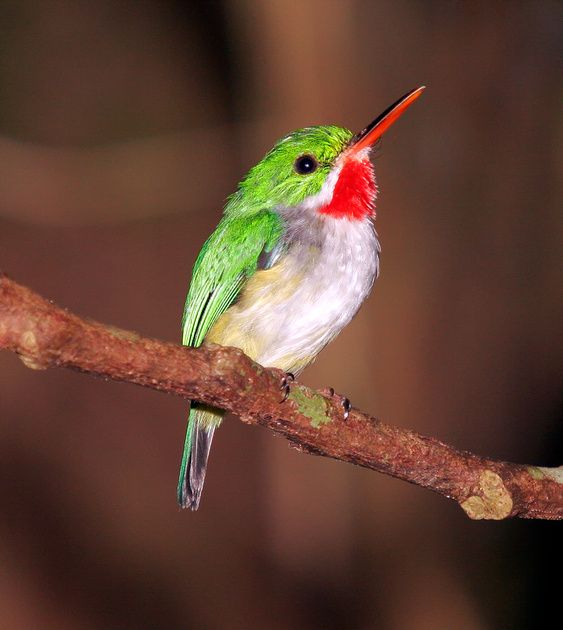The veery (Catharus fuscescens) is a small North American thrush species, a member of a group of closely related and similar species in the genus Catharus, also including the gray-cheeked thrush, Bicknell’s thrush, Swainson’s thrush, and hermit thrush. Alternate names for this species include Wilson’s thrush and tawny thrush. Veeries breed in dense, damp, mostly deciduous woodlands, often near rivers, streams, and swampy areas. Breeding habitat includes forests of oak, maple, cherry, aspen, birch, alder, spruce and fir, among other trees and shrubs. Veeries gravitate toward disturbed forests, where dense understory provides protected nest sites. During spring and fall migration, they favor forest edges and second-growth woodlands. Veeries eat mostly insects and other invertebrates during the breeding season; mostly fruit in late summer and fall. Prey include beetles, ants, wasps, caterpillars, grasshoppers, flies, bugs, and occasionally small frogs and salamanders. Fruits in the diet include juneberries, honeysuckle, strawberries, blackberries, wild cherries, sumac and dogwood fruits, blueberries, wild grapes, and elderberries. The name “Veery” was inspired by the song that males use to defend territory. A series of variations on veer, the song descends slightly in pitch, and resonates as if whirling around inside a metal pipe. A group of nineteenth-century observers called it “an inexpressibly delicate metallic utterance…accompanied by a fine trill which renders it truly seductive.” Veeries emit a variety of whistled, squealed, and chattering calls. The most common is a distinctive, abrupt veer or jeer note that can make these birds easy to find even when they are not singing. Here is a link so you can listen to this bird as well.
Veery cute
Veery


